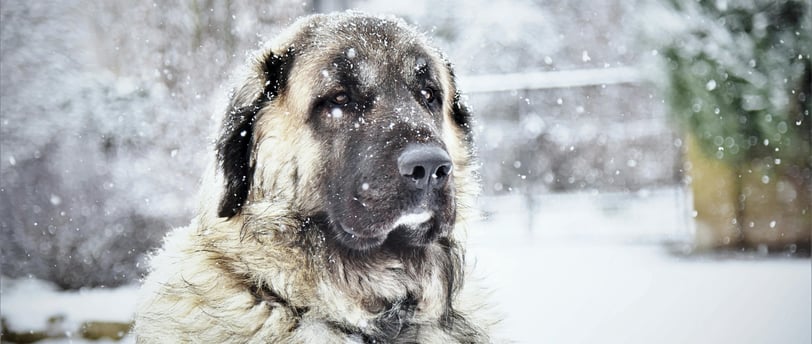Preparing Your Dog's Coat for Winter: Tips to Keep Them Cozy & Healthy
HYGIENE & GROOMING
11/25/20243 min read


As winter approaches, it’s time to prepare not only your wardrobe but also your dog’s coat for the chilly months ahead. A healthy, well-maintained coat is your pup’s first line of defense against cold weather. Follow these tips to ensure your furry friend stays warm, comfortable, and protected throughout the season.
1. Assess Your Dog’s Coat Type
Before diving into a grooming routine, it’s important to understand your dog’s coat type.
Double-coated breeds (e.g., Huskies, Golden Retrievers) develop a dense undercoat for insulation. These coats require extra care to prevent matting and maximize warmth.
Short-haired breeds (e.g., Boxers, Greyhounds) may need supplemental warmth like sweaters or jackets, as their coats don’t offer as much protection.
Hairless or low-shedding breeds (e.g., Chinese Cresteds) need extra clothing and skin care to compensate for their lack of a natural coat.
Tailor your grooming approach based on these needs.
2. Brush Regularly to Prevent Matting
Frequent brushing is essential in winter to keep your dog’s coat healthy and functional. Matting can trap moisture and leave your pup feeling cold and uncomfortable.
Use an undercoat rake for double-coated breeds to remove loose fur.
A slicker brush works well for longer-haired breeds.
Short-haired dogs benefit from a soft-bristle brush to distribute natural oils.
Aim to brush your dog at least once a week—or more often for breeds with thick fur.
3. Bathe Sparingly but Effectively
Bathing too often in winter can strip your dog’s coat of natural oils, leading to dryness and irritation. Unless your dog gets exceptionally dirty, aim for baths every 4–6 weeks.
Use a moisturizing dog shampoo and follow up with a conditioner designed for pets to lock in hydration.
Ensure your dog is completely dry before heading outdoors to prevent them from getting chilled. A towel and a pet-safe blow dryer on a low heat setting can help.
4. Keep Skin Hydrated
Cold weather can dry out your dog’s skin, leading to itching and discomfort.
Add a fish oil supplement or foods rich in Omega-3 fatty acids to their diet to promote healthy skin and a shiny coat.
Use a dog-safe coat conditioner or spray between grooming sessions to maintain moisture.
5. Protect the Paws and Fur from Snow and Ice
Snow, ice, and road salt can cause matting and irritation.
Trim the fur around your dog’s paws to prevent ice balls from forming.
Consider paw balm or booties to shield their feet from salt and freezing temperatures.
If your dog ventures into the snow, rinse their paws and belly with warm water afterward to remove salt and other irritants.
6. Check for Winter-Specific Issues
Winter brings unique challenges for a dog’s coat, so keep an eye out for:
Dry or flaky skin, which may indicate a need for added hydration or dietary adjustments.
Hot spots or areas of irritation caused by trapped moisture under mats.
Excessive shedding, which could mean your dog isn’t fully transitioning to their winter coat.
Consult your veterinarian if you notice persistent issues.
7. Don’t Forget the Sweater for Short-Haired Dogs
For dogs with shorter coats or less natural insulation, a sweater or jacket can be a lifesaver. Choose a well-fitted, breathable fabric that doesn’t restrict movement or irritate the skin.
8. Stay Consistent with Grooming
While it might be tempting to skip grooming during the colder months, maintaining a regular routine is vital. A healthy coat traps warmth more effectively, keeping your dog comfortable even in the chill of winter.
With these tips, your dog will be ready to face winter with a coat that’s clean, healthy, and prepared to tackle the cold. A little extra effort goes a long way in ensuring your furry friend stays cozy and happy all season long.
